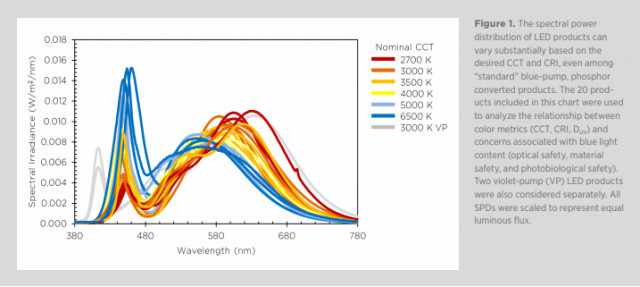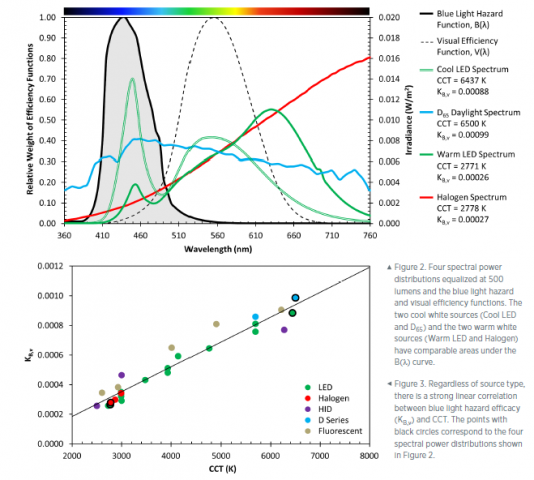› Forums › General Discussion › New street lights fitted !!
- This topic has 35 replies, 19 voices, and was last updated 7 years, 4 months ago by
 Nick White.
Nick White.
-
AuthorPosts
-
4 March 2017 at 11:17 pm #578002
 Nick WhiteParticipant
Nick WhiteParticipantI can’t be the only devious so and so to consider flooding hardware store customer review web pages with 0 out of 5 star ratings for rubbish external lights, plus a few choice comments, can I ?
11 March 2017 at 5:46 pm #578011 David DunnParticipant
David DunnParticipantOne of the reasons for moving to Normandy, apart from the good food and drink, was the dark skies. I have been living here for 15 years, but I still marvel at the milky way, which appears so bright that I don’t really need any dark adaption to see it. It becomes difficult to believe that people can’t see it. But I am reminded every time I visit family in the UK as to the high level of light pollution.
Interestingly the french view on outside lights is that they provide light for the burglars to help break in. If its all black they need to use a torch and can be seen.
Any campaign to limit night lighting gets my support. I would like everybody to be able to see what I can.
David
3 April 2018 at 8:56 pm #579300 Jeremy ShearsParticipant
Jeremy ShearsParticipantThis article in today’s Independent talks about the impact of white LEDs on human health.
Dr Mario Motta, amateur astronomer and member of the American Medical Association, will be talking about this emerging problem during the BAA summer meeting (during the Sunday session).
Jeremy
17 April 2018 at 11:28 pm #579301 Tim HaymesParticipant
Tim HaymesParticipantWokingham Council have replaced the Sodiums (but left a few high P ones) between Reading and where I live. I am above the lights and see the down-lighting. Its very effective, and I assume many lamps in the Wokingham area (about 5 miles away) are also upgraded. I have not seen any further deterioration in light pollution due to LED lights at my location. Im on the dark end of Bortle-5 (SQM 20.3). I continue to use LPR filters for wide angle imaging and I dont think this will ever change. Given what has been said here, close proximity of these lights and their shear brightness is a serious problem for astronomy.
27 April 2018 at 1:44 pm #579381 Len AdamParticipant
Len AdamParticipantWe used to have a farmhouse in France about a mile from the local village. One year we had a letter from the ‘Mairie’ asking for our share of the fund to pay for 6 new street lights going up in the village. I commented on this to the mayor who knew of my stargazing activities and he said that if I was going to observe I should ring him up and he would switch the lights off! Not sure this would work in the UK….
Len Adam
27 April 2018 at 7:14 pm #579384 Mr Jack MartinParticipant
Mr Jack MartinParticipantLee,
It does to some extent.
I contacted Essex County Council about turning off the lights from 12 instead of 1 to 5 am stating that it would save them money.
I got a reply from a ‘Customer Services Officer’ with a link to the lighting section and council policy which seems to be set in stone !
Jeremy, there is also the issue of the impact of white LEDs on nocturnal animals !
They just don’t get it !!
Regards,
Jack
Essex UK
29 July 2018 at 4:28 pm #579774 Tony RoddaParticipant
Tony RoddaParticipantI contacted Dr Mario Motta and received all the reports, etc he referenced at the BAA meeting.
I asked for them because when I returned from the Warwick sessions and asked Northumberland County Council what they’d deployed (under a Freedom of Information Request) they said “5700K for streets and 4000K for the (Dark Skies) National Park”.
I have four 5700K lights each within 25 yards of my house. Whilst there is less scatter than the old sodium lights, these are the worst offenders for suppressing melatonin and disruption of the Circadian rhythm. There is real concern from the National Park management.
I’m preparing a briefing from the five papers received from Dr Motta to send to the NCC, the local NHS and National Trust. And, if necessary, the local news programmes.
If anyone wants the reports please contact me.
Rgds
29 July 2018 at 6:54 pm #579778 Robin LeadbeaterParticipant
Robin LeadbeaterParticipantIs there an established method of determining the rated effective temperature of these LED lights? (They are a long way from being black bodies or even the spectral energy distribution of the sun)
Robin
31 July 2018 at 4:30 pm #579785 Nick WhiteParticipant
Nick WhiteParticipantHi Robin, put simply, a blackbody of a given temperature will display a particular colour that is unique to that temperature. A general light source appearing to have the same colour as the blackbody is said to have a colour temperature that is equal to the physical temperature of the blackbody.
31 July 2018 at 10:18 pm #579791 Robin LeadbeaterParticipant
Robin LeadbeaterParticipantHi Nick,
Yes I understand the concept of colour temperature. I was looking for a quantitative measurement method. I found these spectra of various LED lamps with their rated colour temperature.

It looks like a measurement of the ratio of flux at 450nm and 600nm would give a good indication. I might knock up a simple portable spectrograph and take a few measurements
31 July 2018 at 10:40 pm #579792 Robin LeadbeaterParticipant
Robin LeadbeaterParticipantHere is a plot comparing different light sources wrt “blue light hazard”

The source for the plots is these interesting documents published by the US Department of Energy
https://www1.eere.energy.gov/buildings/publications/pdfs/ssl/opticalsafety_fact-sheet.pdf
https://www1.eere.energy.gov/buildings/ssl/pdfs/true-colors.pdf
Cheers
Robin
1 August 2018 at 8:19 am #579793 Nick WhiteParticipant
Nick WhiteParticipantHi Robin, to predict the colour (chromaticy) of a source requires convolution of its spectrum with the colour receptor profiles of the eye (or equivalent standardised profiles, such as those of the CIE); two convolutions are required, the third can be found via normalisation, x + y + z = 1. This allows a plot of x and y, say, on a two dimensional ‘colour triangle’, with ‘red’, ‘green’ and ‘blue’ at the ‘corners’. A blackbody has a locus of x, y values running across the ‘triangle’. The method then boils down to matching the x and y values of the light source with those of a blackbody at a given temperature (as closely as the values allow). Chromaticy can also be measured using a chroma meter. Hope that helps.
1 August 2018 at 8:28 am #579794 Nick WhiteParticipant
Nick WhiteParticipantIf you search CIE colour space you’ll find all the maths for doing the calc. Wiki has a good page on the subject (could have saved my thumbs by pointing you there in the first place!).
1 August 2018 at 11:46 am #579795 Robin LeadbeaterParticipant
Robin LeadbeaterParticipantThanks Nick,
I was familiar with colour measurement (CIE colour space,tristimulus values etc using standard light sources C, D65 etc) from my life in the paper industry but it was the definition and determination of the correlated colour temperature of the light source which I was particularly interested in. Following your lead I found this specificwikipedia page
https://en.wikipedia.org/wiki/Color_temperature
I wondered about the usefulness of the definition of CCT for light sources like LEDs which have spectra which deviate significantly from a smooth Planck curve. (Rather like trying to measure Teff of a star from the continuum shape in the visible region, a source of much confusion to beginners when they fail to get the “right answer”) The wiki page does caution about the range in which it can be used but the second plot I posted does at least suggest a good correlation between CCT and “blue light hazard efficacy” for a range of light sources regardless of their spectrum shape
Cheers
Robin
1 August 2018 at 4:33 pm #579798 Nick WhiteParticipant
Nick WhiteParticipantIt has limitations in the sense that calculated or measured colour, expressed by two numbers, x and y, is instead represented by a single number, temperature. It is possible for different pairs of x, y values, i.e. different colours, to correspond to the same CCT.
Even so, I used to work in lighting and have performed x, y calculations in the past for LEDs based on measured spectra, rather than datasheets. I then measured the resulting chromaticity. For various combinations of LEDs (e.g. whites plus ambers) I tended to find good agreement between prediction and measurement for my prototype lighting fixtures 😉
It’s a straight forward calculation to do with a short computer program and I would invite somebody (not me) to do it for a representative white LED to confirm where it would be located in terms of x and y, and how this location compares to the locus for a blackbody.
1 August 2018 at 4:42 pm #579799 Nick WhiteParticipant
Nick WhiteParticipantI suppose what I’m saying is one should be cautious when specifying or referencing CCT unless one has the x, y data (or whatever standard is being applied) in their back pocket.
-
AuthorPosts
- You must be logged in to reply to this topic.
